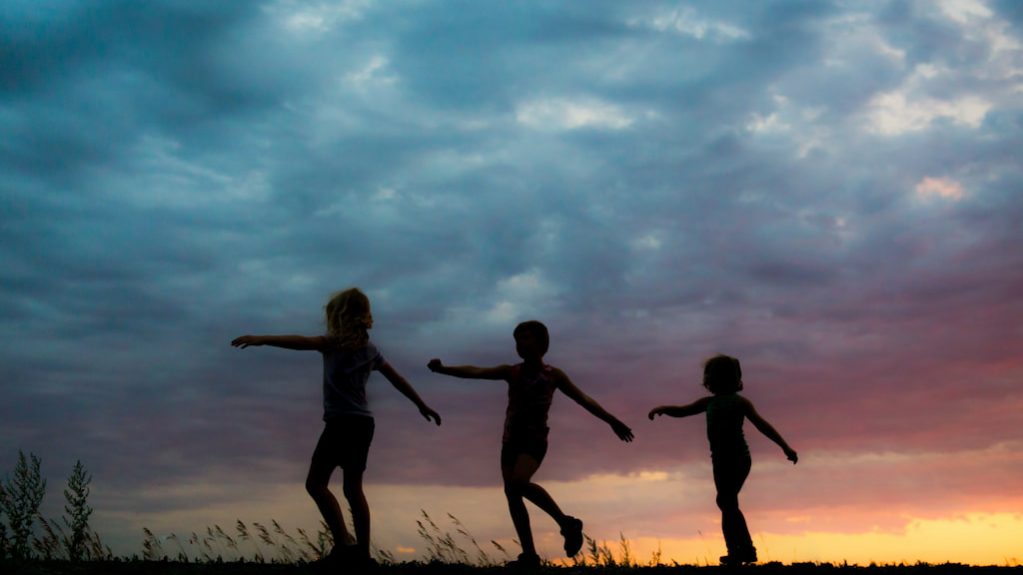Meditation and Mindfulness for Children

Content
What could possibly be the matter with children? They have almost no responsibilities, all they care about is playing games, right? Unfortunately, we sometimes fall into this misconception, but just like adults, children cope with challenging situations, emotions, and thoughts just like we do.
Take a moment to reflect on your childhood. Can you remember a time when you were very much upset or when you were jumping for joy as though the whole world was your playground?
Childhood can be a difficult time as we may have to navigate various cliques, social environments, rapid periods of growth and adaptation as well as psychological and emotional hardships. From going through having our first crush, feeling overshadowed by a newborn sibling, or being bullied, we encounter various new emotions and may not know how to deal with them. It may be difficult to recognize and accept those emotions we’re feeling in the face of these events, especially if we’re experiencing several emotions at the same time. Meditating can help us to recognize these emotions and alleviate their effects, contributing to a joyful and loving childhood.
It’s often easier to stay in the moment when you’re a kid, with few things distracting you from the moment you’re in. When we adults talk about work, school, financial matters, or politics, we may find our minds wandering to other realms. It can be easier to immerse yourself in a game and laugh your head off with a friend when those topics aren’t crowding your mind. By working on mindfulness precisely when this “staying in the moment” muscle is stronger makes it easier to incorporate mindfulness principles into our lives more permanently.

While our minds are more prone to learning when we’re young, it becomes harder to change, learn, and acquire new habits as we grow up. Therefore, it can be easier and longer-lasting to begin learning and listening to ourselves through mindfulness as a child rather than in adulthood.
Explaining Meditation to Children
Meditation is an ancient practice and teaching often explained in abstract theories. A child may have difficulty digesting concepts such as the mind-body connection, the working principles of the brain, and complex emotions. Abstract thinking is a cognitive skill that develops later in childhood. It’s very important to explain meditation in simple and concrete terms as much as possible and as early as possible.
Considering the age and developmental processes of children, we can build the appropriate practice for them, explaining meditation in accordance with their understanding. Fortunately, meditation is a practice that draws from the life happening to us and around us, so it’s possible to grasp the essence of the pratice without overcomplicating it.
Meditating with Children
We can develop simple ways to teach children how to follow the movements of the mind in the present moment, keeping their focus on the here and now without being judgmental. For example, we can start by focusing on the feelings in the body, as it may be difficult to notice the thoughts in the mind. Noticing a feeling of pain, itching, or tension in your body or observing the surrounding environment can help to increase mindfulness. Together, you can watch the movement of a tree’s leaves in the wind, the animals in the surrounding area, or the glowing surfaces illuminated by sunlight.
If you start by bringing your attention to what’s happening around you and in your body right now, it can become easier to notice the thoughts and complex emotions in your mind over time. Presenting emotions to children in a list can enable them to express themselves comfortably by choosing the emotions they feel close to from this list. Through questions such as, “What do you want? How do you feel? Could it be that you are sad, happy, excited, angry or stressed?” we can begin to model how to recognize and express our feelings.
You can develop stories and games together to make meditation more understandable and enjoyable. Children may have a shorter attention span and have difficulty focusing for longer periods of time. With quick and fun meditation practices, you can hold their focus in the present for a longer period of time. How we create our practice is entirely up to our imagination. The game-making process is actually a part of the game. We can fictionalize an imaginary character who likes to meditate and make a story out of the meditation process. Gamifying breathing techniques can also be very enjoyable. For example, it can be much more fun to present the 4 7 8 breathing technique to them as a counting game. We could make the Lion’s Breath a part of a “leonine” game. In addition, children can present many ideas that you haven’t thought of with their unlimited imagination and feel free to give them that space to be part of the creative process.

Benefits of Meditating with Children
Practicing meditation with children can have countless benefits for both the adults and the children. Meditating can help children develop communication skills, increasing their sense of empathy, becoming compassionate listeners, learning to express themselves, and protecting their boundaries. The mindfulness activities you do together with your children can also strengthen the relationships between you.
One of the most beautiful aspects of meditation is realizing the value and importance of creating a space of our own and understanding that everyone needs such a space. The deeper you get into your practice, the easier it is to set boundaries and respect others’ boundaries. We are, unfortunately, more likely to overstep boundaries when it comes to children. It is the adults’ responsibility to act with compassion, listening to their child’s wishes and expectations with just as much care as you would an adult. It’s essential for children to adopt the concept of boundaries and to grow with this awareness and meditation can support the individualization process by enabling children to set healthy boundaries.
As children, we may daydream a lot and be eager for things to happen right away. If something that we’re wanting doesn’t happen at that instant, we may feel intense dissatisfaction or perhaps even a sense of rebellion. Meditation can support us in accepting life as it is and a child who incorporates meditation practice in their daily life can often better cope with the disappointment caused when what is desired doesn’t come true.
As adults, we sometimes just want to do things that bring us pleasure and put off annoying activities for as long as possible. Children are very similar to us, they just might not be as experienced with prioritization yet as we are. If only homework could wait forever so that they could just play games and watch cartoons! Although delaying gratification becomes easier as we get older, meditation can speed up this process. Meditation will foster a sense of their own priorities by developing a sense of responsibility so that they can enjoy both homework and play, making room for these activities in their lives in a balanced way.
Meditation enables us to let our inner child be free. When we’re children, our imagination is usually broad and much wider than it is in adulthood. We believe that we can do whatever we want, but we accept that some of our dreams will not come true as we face the realities of society and life. Although this brings us closer to reality and results in maturity, it can sometimes cause our inner child to remain silent as we grow up and the voice of our adult self to internalize the voice of society and drift apart from our most authentic self.
By meditating, we can remember that there is always room for play and imagination in life. Meditation is one of the best areas to hear our inner child. It helps us to see and accept the most innocent aspects of ourselves that we try to shut off by saying things like, “that’s childish.” Meditating with children allows you to empathize with and listen to them. On the other hand, children learn to take accountability and make room for life’s responsibilities. In other words, looking after your creative, innocent, and playful childlike side as that child may be the key to glowing with each part of you that makes you “you” in the future.

According to some scientific studies, mindfulness-based exercises can also positively impact school performance. Meditation can improve children’s academic success, deepen their friendships, reduce anxiety, and overall contribute to increased levels of self-efficacy.
It’s not always that easy for children to recognize and accept their feelings. Think about it, even us adults have a hard time with this. Meditation can teach children to listen to themselves without judgment. The more they meditate, the easier it is for them to show compassion for themselves and toward others.
Many studies show that meditation has positive effects on sleep quality as well. Meditation can help you to fall asleep more quickly and smoothly. Thus, it strengthens the relaxing and regenerative effects of sleep on our body and mind. A child who has trouble sleeping can improve their sleep quality by meditating regularly. However, if this is a serious and recurring sleep problem, it’s important to consult a specialist.
As a child, it’s often rather difficult to recognize and name our physical and mental needs let alone attend to them. It may be hard to see that the reason we’re grumpy, for example, is because we’re hungry and that’s true even for adults. When we are sleepy, we get moody instead of going to sleep. When we are hungry, we may feel angry and intolerant, yet we may not think of satisfying our hunger. Even if our body gets tired from moving around too much, we may feel exhausted at the end of the day but still find ourselves getting caught up in a game without thinking about stopping and resting. With enhanced body awareness thanks to meditation, children become more comfortable with identifying and attending to their needs. Children can realize these needs earlier once they make a habit of listening to their body, not only during meditation practice, but also for the rest of their lives.
As a result, meditating with children has plenty of benefits for both children and their caregivers. You can support your children’s emotional and cognitive development by turning to this practice, which you can personalize as you wish, creating an entertaining family activity.
Translator: Ebru Peközer

